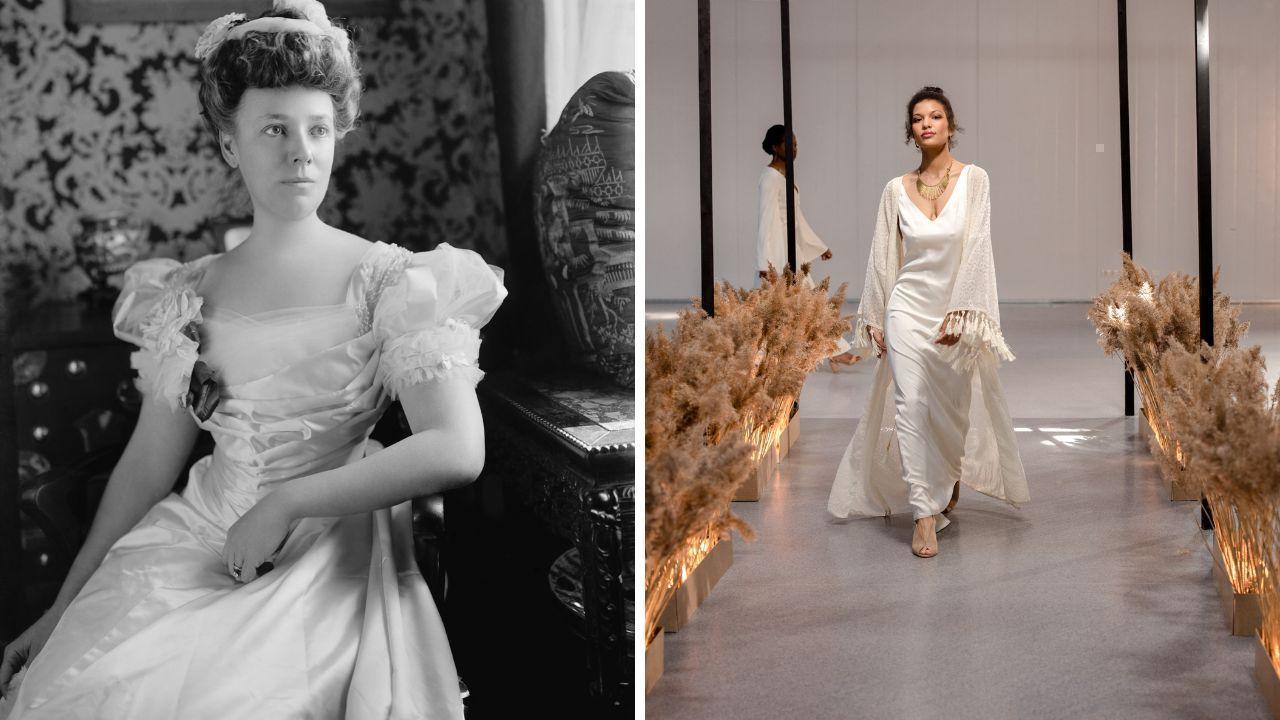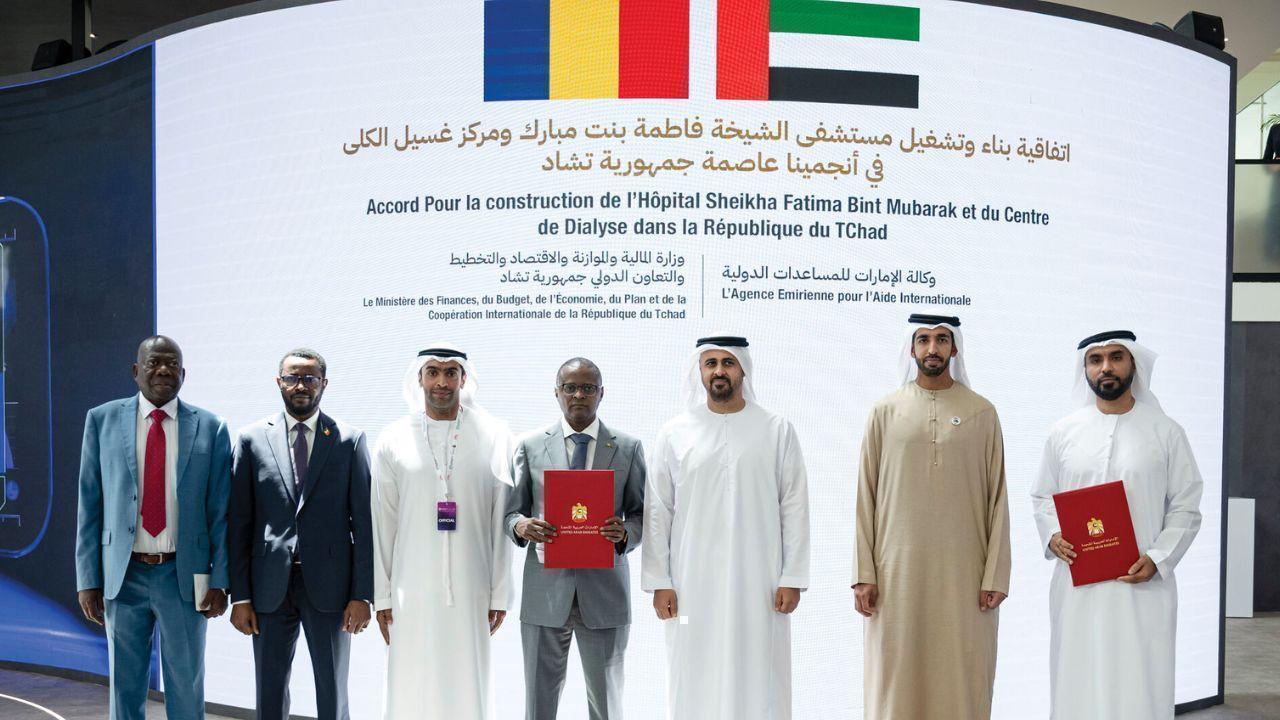
Post by: Vansh Kumar
Fashion is not just about clothing; it is a reflection of society, culture, and the values of the time. Draped in history, the evolution of women’s fashion reveals a fascinating narrative shaped by historical events, social changes, and technological advancements. From the flowing robes of ancient civilizations to the structured silhouettes of the modern era, women’s fashion has undergone remarkable transformations. This article explores these changes, highlighting key styles, influences, and the impact of women’s fashion on society.
In ancient times, clothing served practical purposes, but it also conveyed social status and identity. In civilizations such as Ancient Egypt, Greece, and Rome, women wore garments that reflected their culture and status. In Ancient Egypt, linen was the fabric of choice, allowing for breathability in the hot climate. Women often wore simple, straight dresses called kalasiris, which were adorned with jewelry, indicating their wealth. In Ancient Greece, the chiton was popular. This garment was a rectangle of fabric pinned at the shoulders, allowing for comfort and ease of movement. The style evolved, showcasing different draping techniques that influenced later fashions. Roman women adopted Greek styles but introduced variations like the stola, a long dress worn over a tunic. These garments illustrated the status of women and the changing ideals of femininity.
As societies evolved, so did women’s fashion. The Middle Ages marked a shift towards more modest attire. Clothing became more structured, emphasizing a woman’s figure while still adhering to societal norms of modesty. During this period, women wore long gowns with fitted bodices and flowing skirts, often complemented by outer garments like cloaks. Fabrics varied from wool to silk, reflecting a person’s social standing. Elaborate embroidery and luxurious materials became symbols of wealth and status. The introduction of the crinoline in the late Middle Ages allowed women to achieve a fuller skirt, enhancing the romantic silhouette. Accessories like headdresses and jewelry also became essential, marking the wearer’s social class.
The Renaissance brought about a rebirth of arts and culture, and this was reflected in women’s fashion. Clothing became a canvas for self-expression, featuring intricate designs, vibrant colors, and luxurious fabrics. The farthingale, a hoop skirt, emerged during this period, creating a dramatic silhouette. Women began to wear more fitted bodices with wide skirts that emphasized their waistlines. This era also saw the rise of elaborate sleeves and necklines, showcasing craftsmanship and attention to detail. Fashion in the Renaissance was not just about aesthetics; it was also about power and status. Wealthy women adorned themselves with jewels and wore clothing that reflected their family’s prominence.

The 18th century was a period of significant change in women’s fashion, influenced by the Age of Enlightenment and the societal shifts that followed. The French Revolution had a profound impact, leading to a departure from the extravagant styles of the aristocracy. The empire waist dress emerged, characterized by a high waistline just below the bust, allowing for freedom of movement and comfort. Fabrics became lighter, and styles were simpler, reflecting the growing desire for practicality and modesty. The muslin dress became a popular choice, symbolizing the move towards more relaxed and less restrictive clothing. This period also saw the rise of the Romantic movement, which celebrated femininity and individualism. Women’s fashion embraced soft, flowing lines and delicate fabrics, emphasizing beauty and grace.
The 19th century brought about the Industrial Revolution, which revolutionized clothing production and availability. This period marked the birth of ready-to-wear fashion, making clothing more accessible to the masses. Victorian fashion was characterized by its elaborate designs, featuring corsets, bustles, and petticoats. Women’s clothing emphasized an hourglass figure, with tightly laced corsets creating a dramatic silhouette. As the century progressed, women began to push back against these restrictive styles. The Suffragette movement of the late 19th and early 20th centuries influenced fashion, with women adopting more practical clothing that allowed them to participate actively in social and political movements.
The 20th century witnessed dramatic shifts in women’s fashion, reflecting societal changes and movements for equality. The early part of the century was still influenced by Victorian styles, but the Roaring Twenties marked a turning point. Flapper fashion became a symbol of women’s liberation, with shorter hemlines, looser silhouettes, and a focus on comfort. Women began to embrace the idea of fashion as a form of self-expression, breaking away from traditional norms. The mid-century saw the rise of iconic designers like Coco Chanel and Christian Dior, who redefined women’s fashion. Chanel’s emphasis on comfort and elegance revolutionized women’s wardrobes, while Dior’s New Look of the late 1940s celebrated femininity with cinched waists and full skirts.
Today, women’s fashion is more diverse and inclusive than ever before. Contemporary designers draw inspiration from various cultures, embracing individuality and self-expression. The rise of fast fashion has made trends more accessible, but it has also raised concerns about sustainability and ethical practices. Many designers are now focused on creating sustainable clothing, prioritizing eco-friendly materials and production methods. The #MeToo movement and other social movements have influenced fashion, with brands promoting body positivity and inclusivity. As we look back on the evolution of women’s fashion, it is clear that each era reflects the values, struggles, and triumphs of women throughout history. Draped in history, the garments we wear tell stories of resilience, creativity, and the ever-changing role of women in society.
Draped in History: The Evolution of Women’s Fashion Through the Ages shows how women’s clothing has changed over time. Women’s fashion began with simple styles in ancient Egypt, Greece, and Rome, where clothing reflected a person's social status. As time went on, in the Middle Ages, women wore long gowns that showed modesty, and fashion became more intricate. During the Renaissance, women’s fashion allowed for more creativity with colorful fabrics and unique designs. The 18th century brought changes due to the French Revolution, leading to simpler styles like the empire waist dress.
In the 19th century, women’s fashion saw the impact of the Industrial Revolution, making clothing more accessible to everyone. Victorian fashion included corsets and bustles, but women started seeking comfort as they fought for their rights. The 20th century was a time of liberation with flapper dresses in the Roaring Twenties, emphasizing freedom and comfort. Designers like Coco Chanel changed how women dressed, leading to more modern styles.
Today, Draped in History: The Evolution of Women’s Fashion Through the Ages shows that women’s fashion is diverse, celebrating individuality and sustainability. Understanding this history helps us appreciate how far women have come in fashion and society.
This article is provided by the dxb news network for informational purposes only. The views and opinions expressed in this article are those of the author and do not necessarily reflect the official policy or position of the dxb news network. Readers are encouraged to conduct their own research and seek professional advice when necessary.
Women’s fashion, fashion history, ancient clothing, historical garments, fashion evolution, modern fashion, cultural influences, dress styles, fashion trends, feminine silhouettes, fashion designers, sustainable fashion, vintage clothing, fashion movements, fashion and society, empowerment through fashion, fashion innovation, clothing accessibility, body positivity in fashion, fashion reflection of culture
#trending #latest #WomensFashion, #FashionHistory, #AncientClothing, #HistoricalGarments, #FashionEvolution, #ModernFashion, #CulturalInfluences, #DressStyles, #FashionTrends, #FeminineSilhouettes, #FashionDesigners, #SustainableFashion, #VintageClothing, #FashionMovements, #FashionAndSociety, #EmpowermentThroughFashion, #FashionInnovation, #ClothingAccessibility, #BodyPositivityInFashion, #FashionReflectionOfCulture #breakingnews #worldnews #headlines #topstories #globalUpdate #dxbnewsnetwork #dxbnews #dxbdnn #dxbnewsnetworkdnn #bestnewschanneldubai #bestnewschannelUAE #bestnewschannelabudhabi #bestnewschannelajman #bestnewschannelofdubai #popularnewschanneldubai

IPS 2025 wraps up with global investors in Dubai success...Read More.

Saudi Minister Prince Khalid arrives in Tehran ahead of Iran-US nuclear talks....Read More.














Saudi Defense Minister Visits Tehran Ahead of Iran-US Talks
Saudi Minister Prince Khalid arrives in Tehran ahead of Iran-US nuclear talks.

UAE, Chad Sign Agreement for Sheikha Fatima Bint Mubarak Hospital in N'Djamena
UAE and Chad sign an agreement to build the Sheikha Fatima bint Mubarak Hospital and dialysis centre

DoH Abu Dhabi signs 5 key healthcare deals with Russia
DoH Abu Dhabi joins hands with top Russian health bodies to boost research, trials, and education du

World's First Robotic-Assisted Prostate Cancer Treatment
Cleveland Clinic Abu Dhabi performs the world’s first robotic-assisted prostate cancer treatment usi

UAE issues dust alert as winds reduce road visibility
Dusty weather hits UAE with low visibility. Stay safe, keep windows shut, and follow road signs. Ale